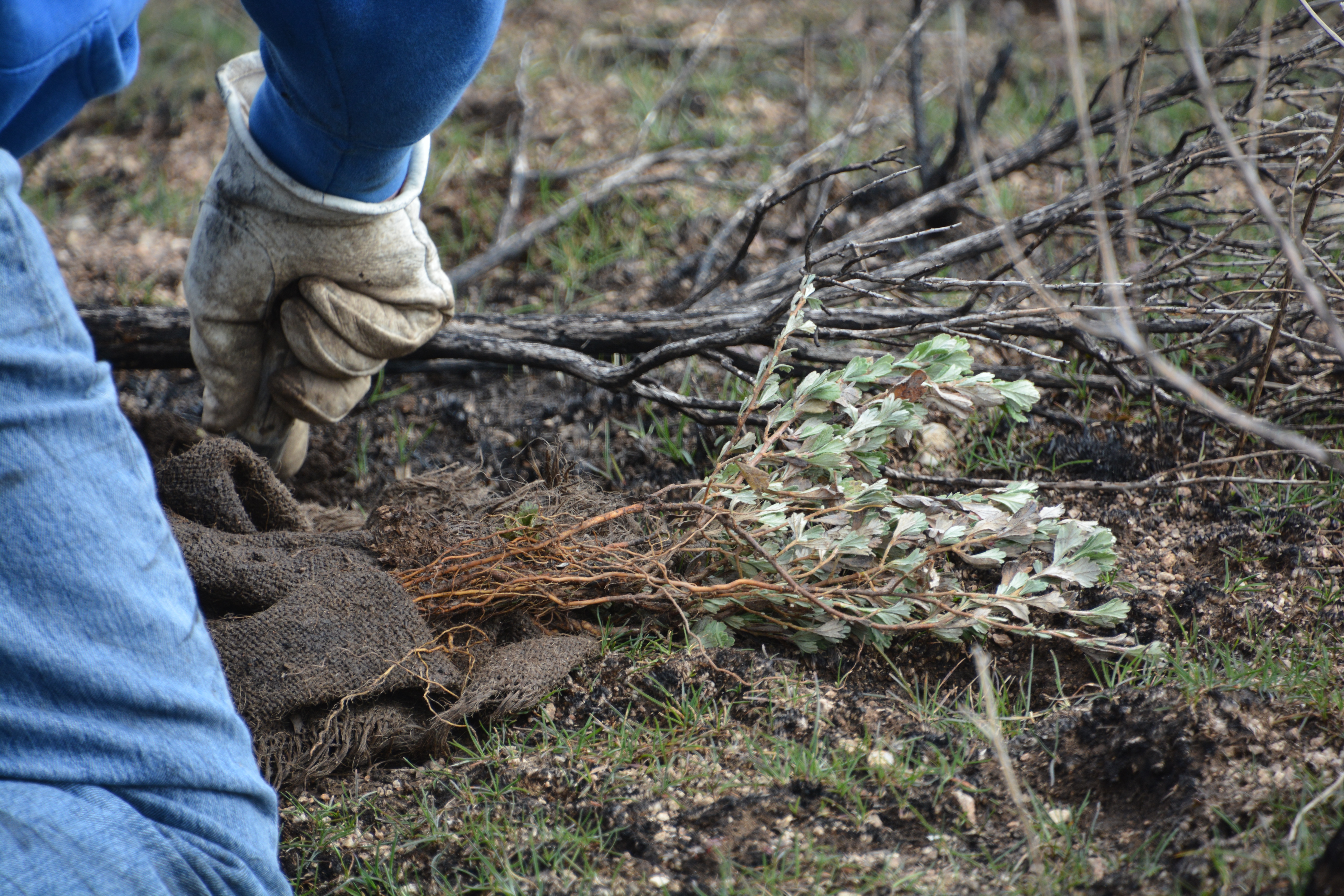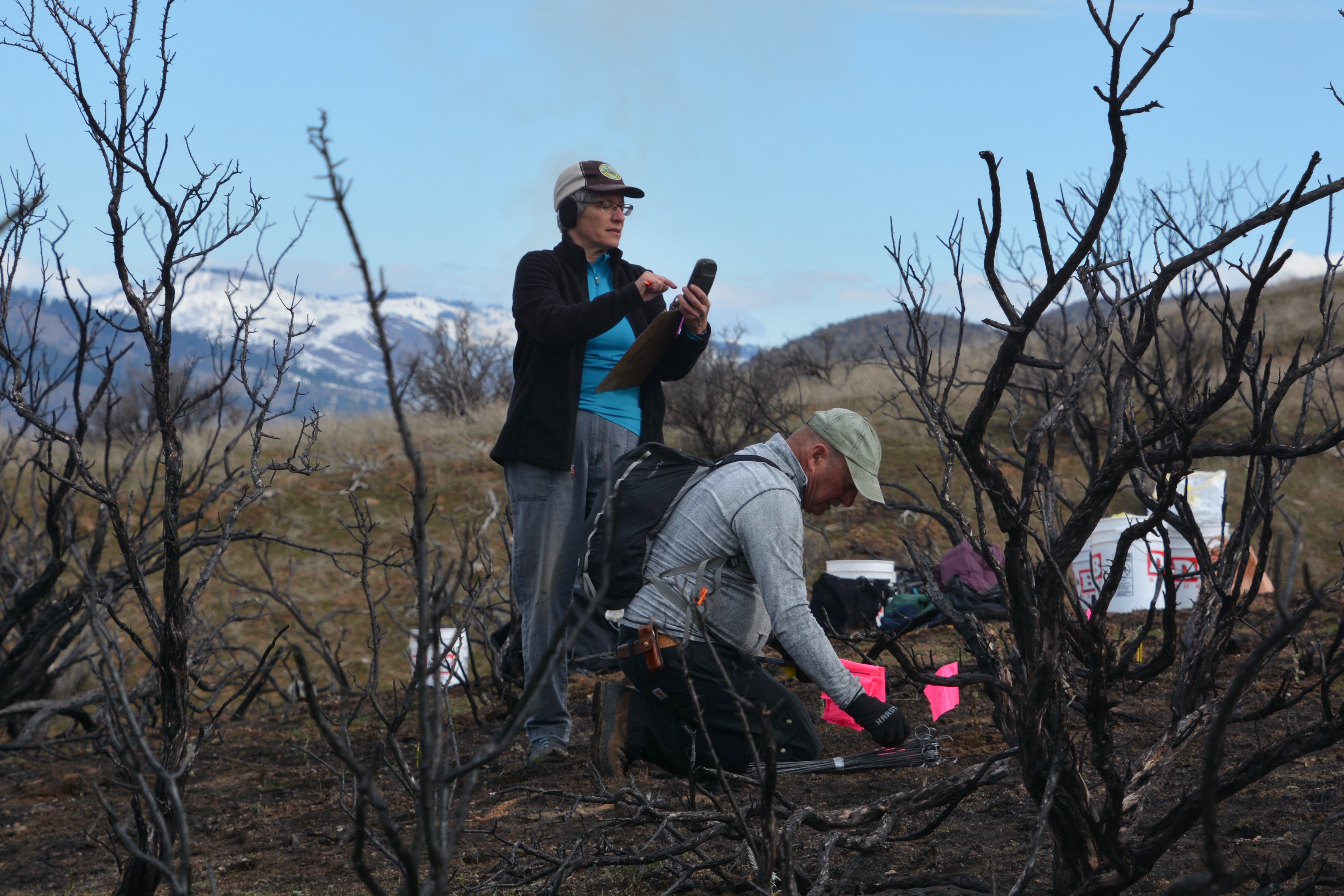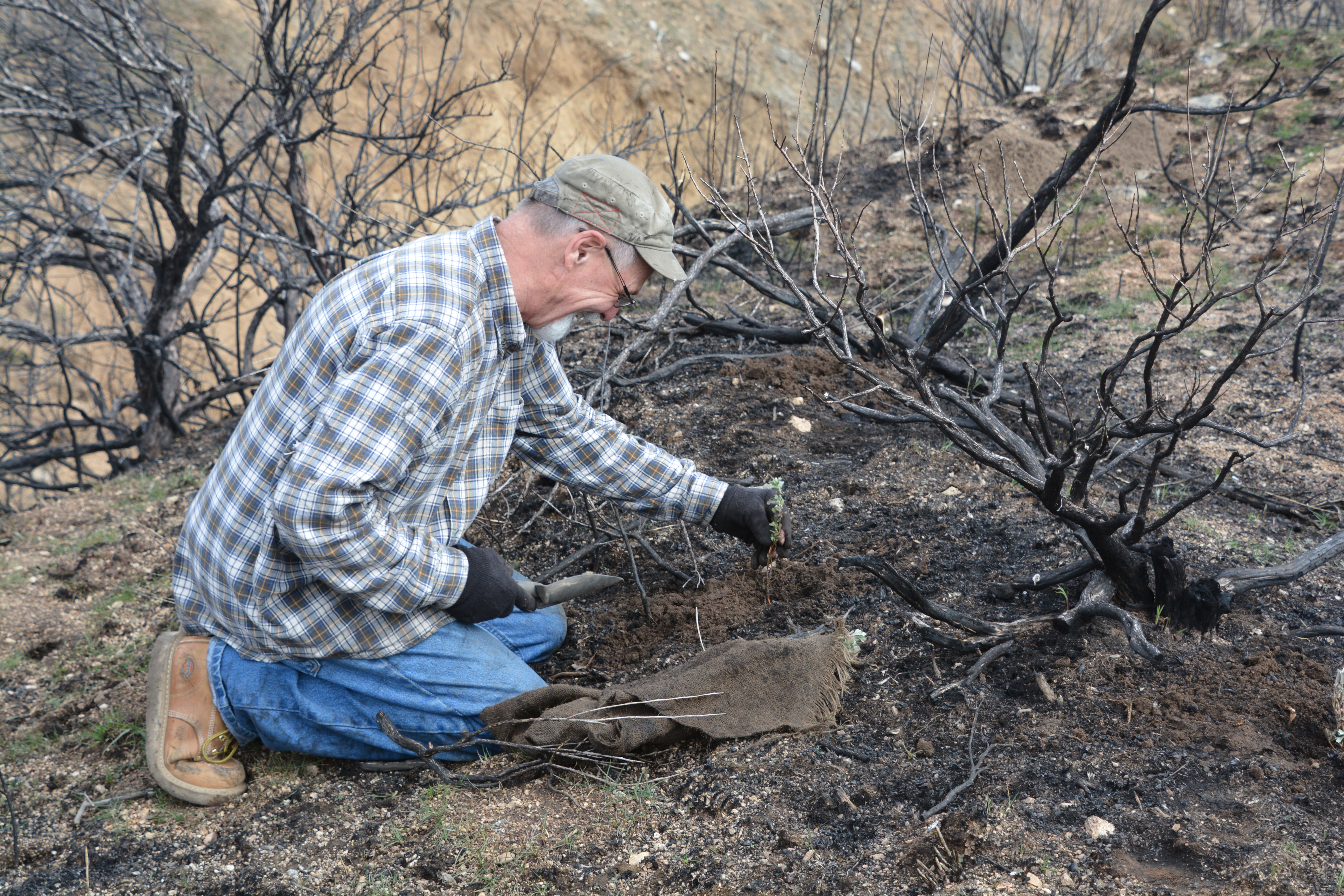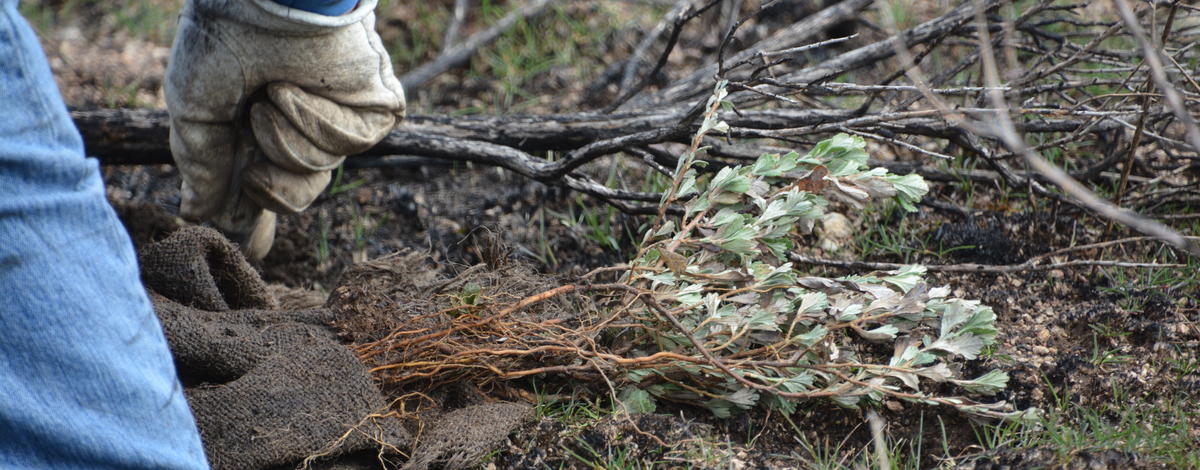Armed with trowels, augers, kneepads and thousands of sagebrush and bitterbrush seedlings, about three dozen volunteers joined Fish and Game staff in late March to replant where a 2018 fire scorched 700 acres near Lucky Peak Reservoir. Their mission? Plant native seedlings and help jumpstart nature's recovery in critical mule deer wintering area near Idaho 21.

Sagebrush and bitterbrush are an extremely valuable part of the landscape for wildlife, particularly during winter. Everything from small mammals, birds and insects to large animals like elk and deer rely on these plants to survive, whether for food, nesting, or shelter.
When fires wipe out swaths of this habitat, nature needs a helping hand, either because the right conditions don’t exist for natural recovery, or there aren’t enough plants in the immediate vicinity of the burn area to reseed it. That’s when Fish and Game and a crew of volunteers step in.
“Without getting out here and planting, there wouldn’t be that jump start. It would take a very long time, and maybe you wouldn’t get the plants back out there that you had before,” said Karie Pappani, volunteer coordinator for habitat restoration at Fish and Game.
Fish and Game has a dedicated group of volunteers who are like the batteries to make that jumpstart happen. They're a detachment of folks who regularly help Fish and Game habitat managers with seedling planting and habitat restoration efforts.
During the planting on March 23, Pappani introduced about a dozen of her most frequent volunteers by first name.
“We have a lot of regulars,” Pappani said. “These are people who come out time and time again, put in a lot of hours, and who really care and are very dedicated.”
The frequent volunteers know each other well, too, and the atmosphere at the plantings can almost be familial.
"We think of it and treat it that way," said Michael Young, a Fish and Game wildlife biologist for the Southwest Region.
For some volunteers, it’s a near-weekly commitment in the early spring, when the soil is at its wettest and just above 40 degrees.

Two such volunteers are Sallie Morse and Bill Clark, contribute in a large, broad capacity, Pappani said. During this particular Saturday at Lucky Peak, the two volunteers were tasked with tagging seedlings and inputting GPS coordinates, which will allow Fish and Game habitat biologists to track the seedlings’ survival going forward.
"In the month of May, we start monitoring of these projects," Young said. "We go out to new and old sites, and take survival measurements and numbers of both new and old plants. If someone had a good time on the planting and is available on weekdays, they can come out and check in on how these plants are doing."
Regular volunteers play a big role when it comes time to get to work, whether it is overseeing something technical — like the plant monitoring — or serving as team leaders getting new volunteers get up to speed quickly.
"They're our crew leaders, and we really couldn't do it without them," Young said.
For other volunteers, like the group from Hope Lutheran Church in Eagle, they make an annual effort to replant seedlings wherever they're needed.
Hope Lutheran has been sending a group of volunteers for 13 years now. The tradition began with church members John and Deb Sloan. John, who used to work at the U.S. Forest Service’s Lucky Peak Nursery, actually propagated sagebrush and bitterbrush seedlings that were planted in some of Fish and Game’s past habitat restoration projects.
Sloan said he and his wife volunteered with the plantings for a few years on their own before realizing it would be a good project for their church group to take on. The church was represented by about a dozen volunteers this time, but the number of volunteers varies from year to year.

The work can be hard, but it's also rewarding, and Fish and Game is always looking for more people to join the volunteer family.
"We accept volunteers that come out once a year to several times a month," Young said. "There's something available for everyone."
In Southwest Idaho, Fish and Game typically does its large-scale sagebrush and bitterbrush rehabilitation throughout April, and again in the fall between mid-October and mid-November. For more information on these and other volunteer opportunities, visit Fish and Game's Volunteer for Idaho's Wildlife page.

